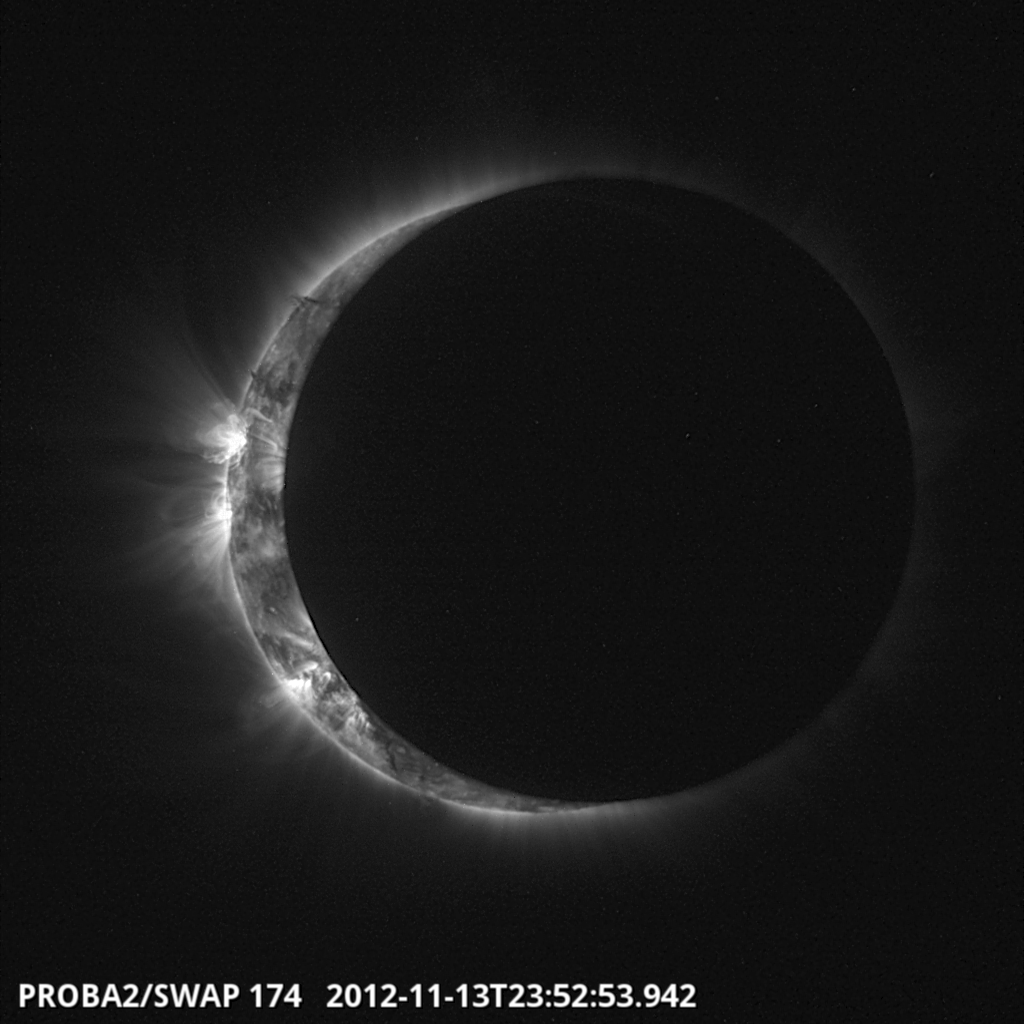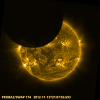Main menu
You are here
PROBA2 Observes Solar Eclipse on November 13th, 2012
At 6:38 on November 14 local time (21:38 on November 13 Belgian time) astronomers and sky watchers of all kinds were treated to a total solar eclipse in Australia. For scientists who study the sun, a total solar eclipse is a unique chance to observe the solar atmosphere, or the solar corona, in all its glory. Under normal circumstances the light coming from the corona is too faint to see because of the blinding effect of the solar disk. During a total solar eclipse the moon blocks the bright light from the surface of the sun, leaving the corona visible.
Click the image above to view the movie of the eclipse
Scientists plan to compare visible light images of the Australian eclipse with images taken in space in extreme ultraviolet light. The SWAP telescope, made in Belgium and carried onboard the ESA satellite PROBA2, was one of several instruments used for this. At the same time as observers in Australia watched the eclipse, PROBA2's orbit in space gave the satellite a clear view of the sun, allowing astronomers to obtain extreme ultraviolet images that can be used to match features seen during the eclipse to their source regions on the sun itself.
A Belgian scientist, Dr. Anik De Groof, travelled to Australia to track the eclipse from the ground.

As soon as more data become available they will be published on this page.














